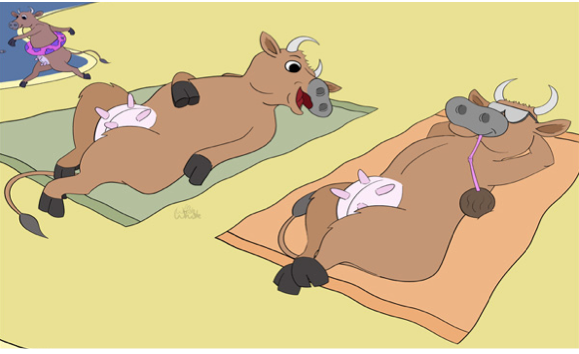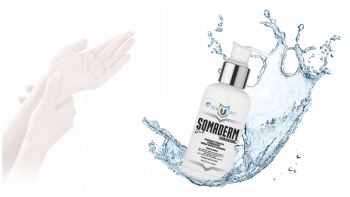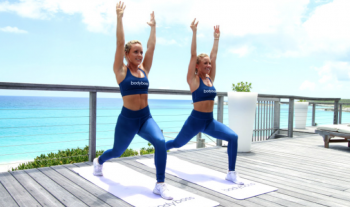WELLNESS--These days, if you order a latte from your local coffee shop, or hit the milk aisle at your grocery store, you’ve probably noticed a massive movement in the non-dairy milk industry. Where there was only cow and perhaps goat’s milk, you’ll now find more options than you can even fathom.
The biggest reason for this shift seems to be that more and more people are lactose intolerant, meaning they don’t digest the protein in dairy products.
Also, many health-conscious consumers are learning about the potential downside of consuming dairy products which often contain added hormones, antibiotics, and other chemicals.
Another reason why we are seeing such an array of trendy and nutritious non-dairy milk products is that more people are becoming vegan for both health and ethical reasons.
As a health coach, I teach people to listen to their bodies. Not everybody needs to avoid milk and in fact, dairy can offer many benefits. If you do consume milk however, I am a firm believer in buying organic, full fat, and if possible, *raw dairy products too. Raw dairy has not been over-processed and still contains healthy and beneficial enzymes.
But for those looking to try an alternative for whatever reason, here is a list of the most popular non-dairy milks available and a brief outline of their benefits. Keep in mind that all of these options can be made at home or purchased already prepared. Always look for unsweetened and organic whenever possible.
Almond Milk
- One of the most popular of all non-dairy milks, almond milk is made from ground almonds and water and has a slightly nutty flavor.
- Almond milk is low in calories, and relatively low in fat.
- A serving of almond milk provides approximately 20% of the recommended daily allowance (RDA) of calcium, 10% of vitamin A, 25% of vitamin D, and 50% of vitamin E.
Coconut Milk
- Made from the meat of coconut and water, coconut milk has a sweet flavor and is loved by many.
- Coconut milk is creamier than coconut water and higher in essential fats and is often added to Thai foods including curry dishes.
- Coconut milk is higher in calories than some of the other non-dairy milks.
- Many people on the ketogenic diet or those consuming higher fat for weight loss, often make coconut milk or cream a part of their daily diet.
- A serving of the full fat version provides approximately 21% of the RDA of fiber, 11% of calcium, 10% of folate, 22% of iron, and 22% of magnesium.
Flax Milk
- Cold-pressed flaxseed oil is mixed with water to make flax milk which is delicious and nutty.
- Many people have said that flax milk is the closest in taste to cow’s milk.
- Relatively low in fat and high in omega-3 fatty acids.
- Contains a generous 30% RDA of calcium but doesn’t contain protein or fiber. Flax milk contains 10% RDA of vitamin A, 25% of vitamin B-12, and 25% of vitamin D.
Hazelnut Milk
- Blending raw hazelnuts with water makes hazelnut milk.
- Hazelnut milk is smooth and creamy with a bold, nutty flavor. Hazelnut milk is considered by many to be one of the tastiest non-dairy milks.
- Hazelnut milk contains a lot of natural sugar at approximately 14 grams per serving.
- Hazelnut milk has 1 gram of fiber and only 2 grams of protein per serving. There is 30% RDA of calcium in a serving of hazelnut milk, along with 10% of vitamin A, 25% of vitamin D, 10% of vitamin E, and 30% of riboflavin.
Hemp Milk
- Made by blending hemp seeds and water, hemp milk has a slightly nutty flavor and a very creamy texture.
- An 8-ounce glass of hemp milk contains approximately 5 grams of fat, mostly the healthier polyunsaturated ones.
- Hemp milk has only 2 grams of protein and does not contain any fiber.
- Hemp milk is packed with amino acids featuring all of the major amino acids.
- Hemp milk has omega-3 and omega-6 fatty acids and approximately 25% of the RDA of calcium.
Oat Milk
- Popular in Europe and one of my favorites! Oat milk is made by blending oat groats (hulled whole grains) along with filtered water.
- Oat milk has a mild flavor with a hint of sweetness and a rich, creamy texture.
- Oat milk is moderate in calories, high in fat and carbohydrates. It is also high in natural sugar with approximately 19 grams per serving.
- There are 4 grams of protein and 35% RDA of calcium in each 8-ounce serving. You can find 10% RDA of vitamin A, 25% of vitamin D, 10% of iron, and 30% of riboflavin in each serving of oat milk.
Rice Milk
- Another popular option. Rice milk is made from water and most often brown rice. Rice milk has a wonderful, mild flavor and a thinner consistency.
- An 8-ounce serving of rice milk has approximately 120 calories and 2 grams of fat and 1 gram of protein.
- A serving of rice milk only contains 2% RDA of calcium and is sometimes enriched with other vitamins and minerals.
Soymilk
- The most popular of all non-dairy milks. Made from grinding dry soybeans with water, soymilk may be an acquired taste. Soymilk is one of the thickest and creamiest available and has a slightly nutty taste.
- A serving of soymilk has 100 calories, 4 grams of fat, and 6 grams of sugar in a serving of soymilk. Soymilk has a generous 7 grams of protein and 30% RDA of calcium per serving. A serving of soymilk contains 10% RDA of vitamin A, 50% of vitamin B-12, 30% of vitamin D, 6% of folate, 6% of iron, 10% of magnesium, 30% of riboflavin, and 4% of zinc.
Sunflower Milk
- Sunflower kernels are blended with water to make sunflower milk. Sunflower milk has a rich texture and a sunflower seed taste.
- An 8-ounce serving of sunflower milk contains approximately 70 calories and 4 grams of fat. Sunflower milk has 7 grams of sugar and doesn’t provide a significant amount of protein or fiber, with one gram of each in an 8-ounce serving. It has about 30% RDA of calcium, 10% RDA of vitamin A, and 2% of iron.
Whole Grain Milk
- Combining various whole grains and blending them with water make whole grain milk.
- Whole grains may include brown rice, barley, black rice, millet, amaranth, and quinoa, among others. The flavor and nutritional value of whole grain milk varies based on the variety of whole grains used in the recipe.
- Nutritional values are similar to rice milk.
*Some people with compromised immune systems, pregnant women, children, and some elderly may need to avoid raw dairy products. Always check with your doctor.
(Jay Bradley is a Youthful Aging, Wellness & Lifestyle Expert Living in Los Angeles. http://www.JayBradleyLifestyle.com. He is the Best-Selling Author of LIVE LOOK FEEL, The 12-Week Guide to Live Longer, Look Younger & Feel Better!)
-cw
WELLNESS--You may be familiar with the term “Sound Bath” as it has become more and more popular, especially within the spiritual, yoga, and meditation communities. Although it has nothing to do with getting wet, many would liken it to being cleansed from the inside out.
WELLNESS--Over the past few months I have been using an FDA approved, homeopathic, transdermal, Human Growth Hormone (HGH) gel. Like many people, I am always on the lookout for the next breakthrough product that will help me remain healthy, young, and vital.
WELLNESS--I’ve been taking a social media vacation. I needed a break. The more people I speak with, it seems that I am not alone.
WELLNESS--We have been having record breaking heat in Southern California and with the planet continuing to warm up, there’s a good chance we have not seen the end of it.
This past week Los Angeles and San Diego have felt more like Arizona with temperatures reaching 117 in some places. Heat records all over southern California were toppled and at one point in Los Angeles alone there were over 32,000 residents without power.
WELLNESS--For starters, the all or nothing attitude towards exercise is not the mindset we want to hold.
WELLNESS--Last week two high profile celebrities Kate Spade and Anthony Bourdain took their own lives.
























